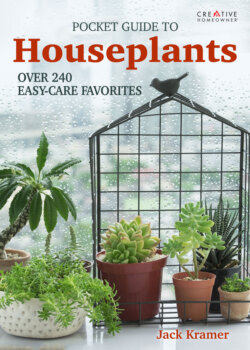Читать книгу Stitching Pathways - Jack Kramer - Страница 19
На сайте Литреса книга снята с продажи.
Water
ОглавлениеWater plants thoroughly, because an insufficient amount of water will create dry pockets in the soil; when roots reach a dry spot, they stop growing. Although watering is easy in itself, watering at the proper times and in the correct amounts seems to be the greatest challenge. In fact, overwatering and underwatering are the chief causes of houseplant death. If standing water remains in the saucer, it will keep the soil in the pot too soggy, a condition that can cause root rot and plant death. Keep the soil evenly moist for most houseplants. (Many cacti and succulents are exceptions, although they do need moisture.)
Overhead Watering
Use a metal or plastic watering can with a long spout that allows you to reach through foliage to the soil. The spout should have a rose (resembling a showerhead) that releases a gentle spray of water rather than a concentrated flow. Another good way to water plants is to set the pots in a sink or tub and turn on a gentle shower of tepid water. Water slowly, gently, and deeply.
Now and then give your plants a soaking.
Watering from the Bottom
Once a month, give all of your plants a good soaking. To do this, fill a sink or a pan with water and set the containers in the water. The water should be deep enough to reach just below pot rims. If the soil is dry, air will bubble out of the soil as water displaces it. When air bubbles no longer appear on the soil surface, remove the containers, and let the excess water drain.
4 Rules for Watering
• Push your finger into the soil. If the soil doesn’t give, that means it’s dry and in need of water.
• You can water at any hour in the daytime, but avoid watering at night, which can cause fungus.
• Treated water out of the tap is fine for houseplants—chlorine, fluoride, and all.
• Always use tepid, room-temperature water.
